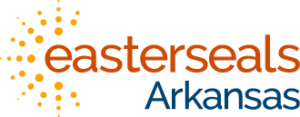
Where every child deserves the chance to shine.
For children with developmental challenges, education can be overwhelming. At Easterseals Arkansas, we provide a place of learning and growth for all children, whether they have special needs or not.
Our three-star rated (by Better Beginnings) developmental preschools are designed to meet and exceed each child’s individual needs—setting the stage for a lifetime of learning.
What We Offer
Comprehensive Curriculum Tailored for Your Child
We understand that every child is unique. Our robust special education curriculum includes various subjects—from language and science to art and music. This ensures that all facets of your child’s development are nurtured.
Expert Therapies for Holistic Development
Our school offers pediatric occupational, physical, and speech-language therapies, assuring a comprehensive approach to your child’s development. Your child isn’t just learning; they are thriving under the care of experts.


What We Offer
Technology and Staffing: A Cut Above the Rest
With assistive technology, highly-trained early childhood special education teachers, and a full-time nurse on site, we’ve set a new standard in preschool education.
A Partnership with Parents
We provide valuable resources like developmental evaluations and educational, medical, and financial information. Our extended hours and low child-to-staff ratio mean your family’s needs are always front and center.
Flexible Payment Options
We understand that quality education shouldn’t break the bank. That’s why we accept Medicaid, ARKids, and TEFRA funding. Making top-tier education accessible to everyone is our main goal.
Connect With Us
Open Monday through Friday from 7:15 am to 5:30 pm.
For more information, feel free to contact us at:
Little Rock Developmental Preschool
3920 Woodland Heights Road
Little Rock, AR 72212
Phone: 501-227-3600
Email: info@eastersealsar.com
Follow us on Facebook for updates and more!
Little Rock Preschool Inquiry
"*" indicates required fields
